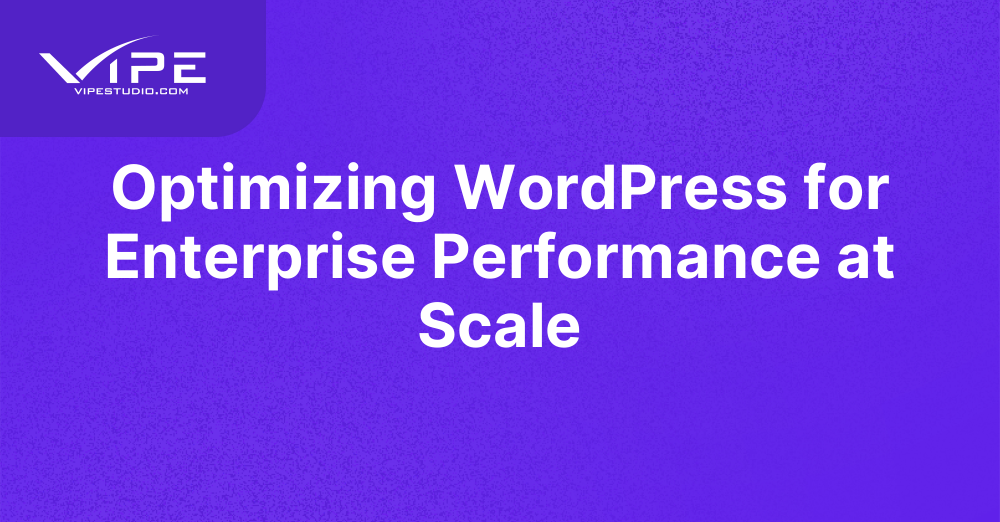30.04.2025
WordPress Development
Optimizing WordPress for Enterprise Performance at Scale
READING TIME: MIN
Table of Content
Enterprise websites demand high performance, scalability, and resilience—especially when dealing with large volumes of traffic, complex functionality, and international audiences. While WordPress is widely known as a blogging platform, with the right architecture and optimizations, it becomes a robust solution for enterprise-grade websites. This article explores best practices for optimizing WordPress performance at scale.
Why Enterprise WordPress Sites Need a Performance-First Approach
Enterprises often face performance challenges due to high traffic, extensive plugin usage, and custom integrations. Slow load times can impact user experience, SEO rankings, and conversion rates. That’s why a performance-first approach is essential—focusing on server infrastructure, database efficiency, code optimization, and frontend delivery.
By investing in performance from the beginning, organizations avoid bottlenecks that arise as traffic grows or new features are introduced.
Choosing the Right Hosting Infrastructure for High-Traffic Environments
One of the most critical decisions is selecting a hosting environment that can scale. Enterprises should opt for managed WordPress hosting with auto-scaling capabilities, containerized environments (e.g., Docker), and load balancers.
Incorporating a CDN (Content Delivery Network) reduces server load and delivers assets from global edge locations—improving performance for international visitors.
- Use scalable cloud providers like AWS, GCP, or Azure
- Deploy caching layers such as Redis or Memcached for database queries
- Implement server-level caching and object caching
Backend Optimization: Clean Code, Database Indexing, and Query Control
Enterprises often rely on custom post types, complex queries, and custom fields. While powerful, these can lead to database inefficiencies. Optimizing backend performance involves:
- Reducing unnecessary plugins and avoiding bloated themes
- Profiling and optimizing slow database queries
- Cleaning up postmeta and transients regularly
- Using indexes on large database tables for faster lookups
At Vipe Studio, we work with enterprises to audit and refactor code to improve backend responsiveness and maintainability.
Frontend Performance: Minimizing Load Time and Resource Usage
Frontend optimization is crucial for user experience and SEO. Enterprises should minimize the number of HTTP requests, serve compressed images, and bundle CSS/JS files efficiently.
Techniques such as lazy loading, code splitting, and using modern frameworks like Next.js with Headless WordPress can dramatically reduce load times and increase Lighthouse scores.
Monitoring, Analytics, and Continuous Optimization
Performance is not a one-time task. Enterprises must monitor website performance continuously using tools like New Relic, Google PageSpeed Insights, and server analytics dashboards.
Set up alerts for anomalies, automate audits, and create CI/CD pipelines to test performance metrics before deployment. This ensures that every update maintains or improves the overall site speed and user experience.
Partnering with WordPress Performance Experts
Scaling WordPress for the enterprise requires deep knowledge of both the platform and modern development practices. At Vipe Studio, we specialize in building high-performance WordPress solutions that serve millions of users while maintaining speed and stability.
Want to boost the performance of your enterprise WordPress site? Contact us today to start your performance optimization journey.
More on The Topic
- WordPress Performance Debt Nobody Talks About
- The Admin UX That Shapes Decisions
- Scaling WordPress Without Losing Culture
- WordPress 6.9 “Gene”: What This Release Really Changes
- Managing Gutenberg Chaos at Scale
The content of this website is copyrighted and protected by Creative Commons 4.0.



